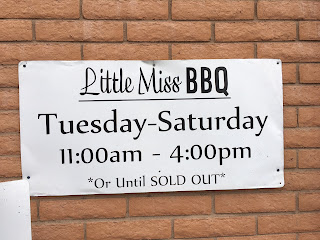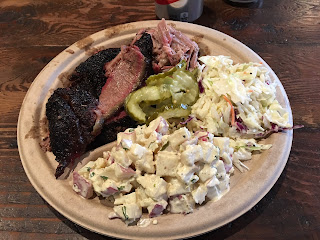This is my final post of 2017.
As we speak (or as you read this), I am watching something called "The Pizza Show". In Season 1 / Episode 6, the host takes us to Silicon Valley, where a startup is trying to use robots to cook pizzas in a food truck as the truck delivers the pie to your home - making sure that the pie is piping hot and fresh when it arrives.
Early in the episode, the host speaks with other pizza gurus ... the "panel" of friends / co-workers sample mass-produced pizza and scoff at how awful it tasted compared to the stuff you get from a 60 year old pizzeria in New Jersey.
The episode, of course, outlines where the world is headed.
- Mass-Produced, Average, Fast, Convenient, Cheapest Option ... few winners, but if you hit the lottery, you dominate the world.
- Individualistic, Highly Above Average, Not Convenient, Pricier, Great Experience ... many winners, but you won't hit it big. You could make a fantastic living, however.
We get to pick which type of business we want to operate, don't we?
If our sales are flat or are declining, it means we're not picking either.
We are never going to compete against Amazon. That's the wrong game. We need to stop even talking about them. They won the battle 10-15 years ago while we ignored them, or they won it 18 years ago when we laughed at them. We messed up. It's time to move on.
If we want to choose the former, we won't get there by doing things the way we've always done them, will we?
If we want to choose the latter, we won't get there by doing things the way we've always done them, will we?
What's the common element?
- "We aren't going to get to the finish line doing things the way we've always done them."
Let's pretend we're an $80,000,000 business ... we're stuck directly between mass-produced and individualistic business models, aren't we? Not Macy's, not Absolute Socks. Do things the same way and get the same result. We'll have to pick who we want to be in the future ... hint ... we probably want to be more like Absolute Socks, and if we don't want to go down that route, we're probably going to sell the business in the next few years.
We'll have four choices in 2018.
- Buy.
- Sell.
- Scale.
- Unique.
Buying might make sense. Purchase a dozen catalogers, fold 'em up into one parent brand, milk 'em for all they are worth, then kill a brand when it is time and buy a new one. This is a huge trend in 2018 for old-school catalogers.
You can prepare your business to be sold. There's a ton of profit to be made, and you'll sell for a higher price. Get all your metrics and tactics in order in 2018.
You can choose to "scale". If you want to compete against Amazon, have at it. Good luck! Pay Google and Facebook all of your hard-earned money. Make sure you have the lowest possible price. Make sure you have the best possible promotions. Make sure you are the most convenient choice on the planet, with the fastest delivery. Be the best. Or else you'll lose, right?
You can choose to be unique. Creating great experiences for individual customers. This is hard work. This is where "word-of-mouth" leads to low-cost / no-cost customer acquisition, which allows you to grow without paying Google/Facebook all of your hard earned money. The last thing you want to do is pay Google/Facebook all of your hard earned money.









































